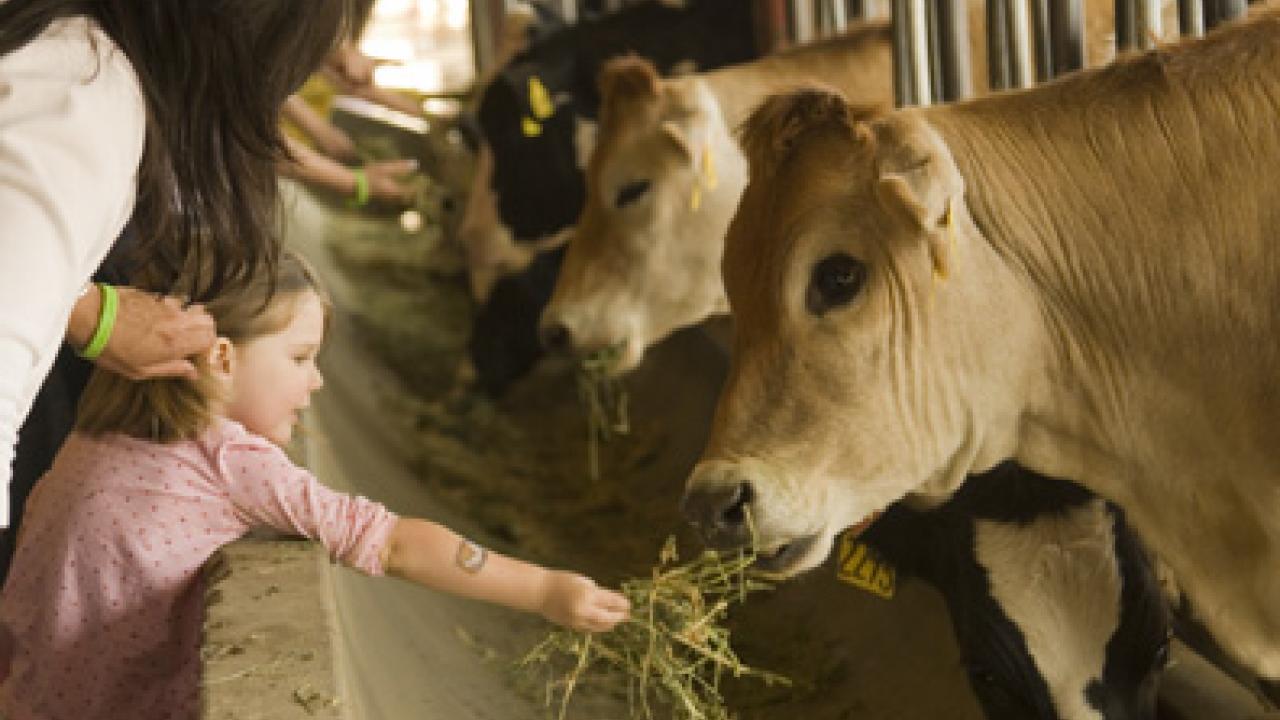In tandem with last week’s publication of the entire cattle genome, a UC Davis-led consortium unveiled the first comprehensive overview of the collection of genes responsible for milk and milk production.
The Bovine Lactation Genome Consortium’s findings, published in the April 24 issue of the online journal Genome Biology, paint a vivid picture of the molecular evolution of milk and lactation.
The paper is a companion piece to two reports in the April 24 issue of the journal Science. Those reports culminated a six-year, worldwide effort to complete the sequencing of the cattle genome, analyze it and interpret it. The Baylor College of Medicine Human Genome Sequencing Center coordinated the project; it ranged over 25 countries and involved more than 300 scientists, including the UC Davis researchers.
Data produced by the overall genome sequencing will enable researchers to identify genetic variations in cattle that are important not only for milk production and milk composition but also for reproduction, feed efficiency, meat quality and disease resistance. It will have direct application in helping to guide the selection of high-performing animals in cattle breeding programs.
“The sequencing of the cattle genome represents a breakthrough for the study of milk and lactation,” said Danielle Lemay, the lead author on the milk genome study and a bioinformatician and nutrition scientist in UC Davis’ Department of Food Science and Technology.
“When paired with existing data, the bovine genome sequence is something of a modern Rosetta stone, making it possible to identify and interpret the significance of genes related to milk and lactation,” she said.
Researchers note that the genome sequence and the identification of sequence variation will improve the accuracy and efficiency of genetic selection in cattle by allowing the evaluation of an animal’s whole genome. The genome sequence also opens the door to the identification and description of all cattle genes and to the understanding of their function in relation to production traits. This information will be valuable in improving the sustainability of the dairy and beef cattle breeding systems.
The milk genome
The UC Davis-led consortium focused on cattle genes involved with milk and the lactation process, doing so because of the unique role that milk plays in the lives of cattle, people and all other mammals.
“Milk uniquely informs us about nutrition because it is the only food that has evolved specifically to nourish mammals,” UC Davis professor and food scientist Bruce German said.
“Because milk is produced for offspring at great physiological expense to the mother, we can theorize that there are few superfluous components in milk,” he said. “Generation after generation, those animals that are able to produce more nourishing milk perpetuate their genes through the survival and reproductive success of their offspring.”
The researchers identified 197 milk protein genes and more than 6,000 milk production genes within the overall cattle genome. The researchers dramatically narrowed the search for genes that affect milk traits by overlaying this data on existing information regarding 238 DNA segments that are known to be associated with particular traits.
“Overall, the findings of our study support the hypothesis that the biological roots of milk production in mammals are quite ancient and that the evolution of milk has been constrained in order to maximize the survival of both mother and offspring,” said Juan Medrano, a professor of animal genetics in UC Davis’ Department of Animal Science.
In the study, the researchers examined the genomes of cattle, people, dogs, mice and rats — all mammals that carry their young for long periods in the mother’s body, where they are nourished by a placenta. This genome comparison also included the opossum, as representative of marsupials, which carry their young in a pouch after birth, and the platypus, which is one of only two species of mammals that lay eggs rather than giving birth to live young.
By comparing the genes of these seven species, the researchers discovered that, compared with other cattle genes, the individual milk and milk production genes are:
• More likely to be found in all mammals, despite the wide diversity of lactation strategies.
• More likely to be duplicated in placental and marsupial species.
• Less likely to have changed as new species evolved.
• Evolving more slowly in cattle than in other species.
The researchers also found that the milk proteins that remained the same across species were those proteins related to secreting milk in mammals. Conversely, those milk proteins that had diverged the most from species to species were those associated with the nutritional and immunological components of milk.
This suggests that the immunological component of milk is tailored to the particular needs of each species and highlights the need for future nutrition research to examine how foods might be tailored to meet individual immunological needs, the researchers noted.
On the Net
Bovine Lactation Genome Consortium: lactoknow.ucdavis.edu
Media Resources
Dave Jones, Dateline, 530-752-6556, dljones@ucdavis.edu
